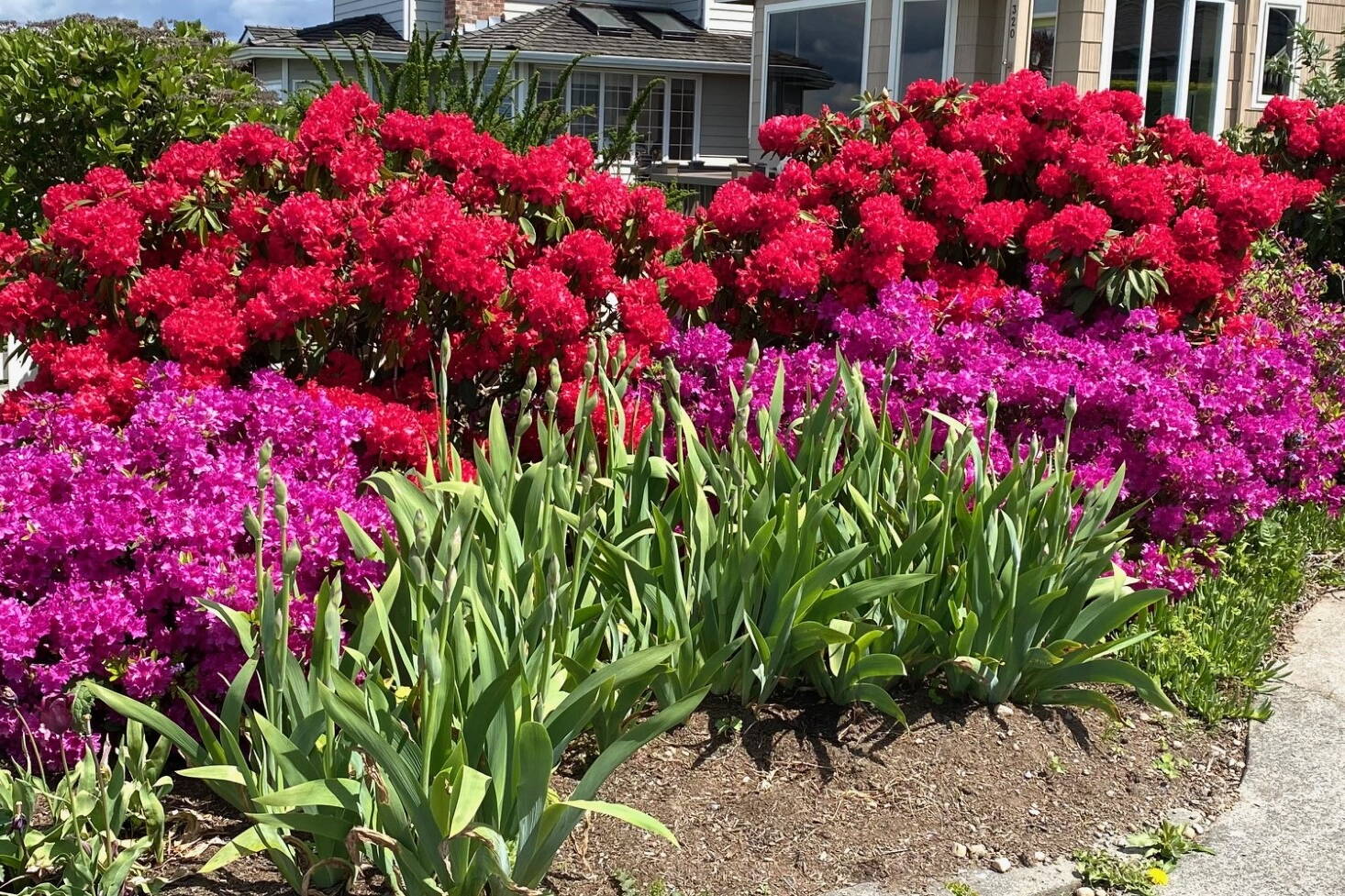Several kinds of bees can make honey, although domestic honeybees are the most famous and best-studied. They make honey from flower nectar, storing it in waxy cells in a comb in the hive. Honey is a food source for the whole colony of bees, adults and larvae. Larvae live in some of the cells as they mature from egg to adult. (Those that are destined to become queens get a special diet, but that’s another story).
A foraging worker bee visits flowers, slurps up some nectar, and stores it in a special crop (not the digestive stomach). In the crop, enzymes begin to break down the double-sugar called sucrose into the simple sugars of glucose and fructose. The forager carries a load of nectar back to the hive and transfers it, mouth to mouth, to another worker bee, for more processing and then for storing in the comb. All that processing and some fanning by the workers’ wings reduce the amount of water in the nectar. So honey is a concentrated solution of sugars, chiefly glucose and fructose in varying proportions, plus small amounts of amino acids, vitamins, and some aromatic chemicals from the floral source of the nectar.
Honey is a very nutritious substance, but sometimes it is toxic. Toxic nectar has evolved in numerous, phylogenetically diverse lineages. The nectar of rhododendrons is notorious for this, but the toxicity varies enormously among the hundreds of rhododendron species; it can even vary among populations of the same species. The neurotoxic properties of the honey made from certain species have been used for centuries both medicinally and to foster recreational hallucinations and, furthermore, to inactivate and sometimes to kill enemies.
This form of honey became known as “mad honey,” its effects known for many centuries (since at least 400 B.C.). Historically, in the ongoing conflicts between Rome and King Mithridates in Asia Minor, back around 65 B.C., some wily allies of that king made mad honey available to Roman troops as they passed through the countryside. Intoxicated by consuming that honey, the Romans were incapacitated and easily demolished by the king’s allies. Some modern researchers note, however, that given the long well-known effects of mad honey, it is a bit strange that the Romans would fall for that trick.
Of interest here, however, is why the rhododendrons and other plants with toxic nectar produce those toxins at all. And there we come up against some big unknowns. The toxins might help control degradation of the nectar by microorganisms. Or they may deter nectar thieves, such as thrips, ants, or tiny beetles from visiting the flowers — they are poisonous to some kinds of solitary bees and honeybees in Europe (but not honeybees of Asia Minor and not bumblebees), which tend to avoid species with toxic nectar, and perhaps might deter visitors that would be poor pollinators. Or, coming at this question from another angle, the foliage of rhododendrons is usually laden with toxins that are known to deter and even kill many herbivores, from grazing mammals to thrips. It seems possible that those toxins might simply be expressed in the nectar along with all the other tissues and not have a special function in the nectar. So far, there have been very few studies focused on sorting out these questions in particular species.
There are at least two local species in the same taxonomic family as rhododendron that produce toxic foliage and nectar. Bog laurel (Kalmia polifolia) is one of them. In other regions, certain species of Kalmia laurel have a record of causing deaths of grazing mammals. Although bees regularly collect the nectar, eating a lot of honey made with laurel nectar can cause illness and death in humans. Bog rosemary (Andromeda polifolia) has toxic foliage; although the nectar is safely (apparently) collected by bees and other insects, honey made from that nectar can be highly toxic to humans.
It is interesting that the rhododendron-type toxins seem to occur at notable levels only sporadically within this large taxonomic family. Some species have no evident toxic effects. For instance, blueberries belong to the same taxonomic family, and blueberry fruits are popular in the diets of many animals, blueberry shrubs are winter forage for deer and hare, and bees forage well on the flowers. Most relatives seem to be non-toxic, although not all have been tested, and there is more to be learned about the occurrence and levels of the toxins, as well as their effects on consumers.
• Mary F. Willson is a retired professor of ecology. “On The Trails” appears every Wednesday in the Juneau Empire.

